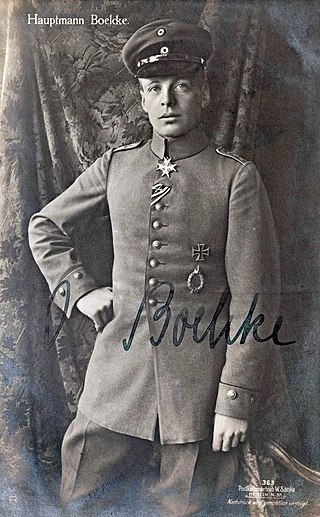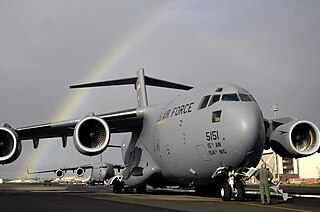Related Research Articles

A battle is an occurrence of combat in warfare between opposing military units of any number or size. A war usually consists of multiple battles. In general, a battle is a military engagement that is well defined in duration, area, and force commitment. An engagement with only limited commitment between the forces and without decisive results is sometimes called a skirmish.
A tactic is a conceptual action or short series of actions with the aim of achieving a short-term goal. This action can be implemented as one or more specific tasks. The term is commonly used in business, byprotest groups, in military, espionage, and law enforcement contexts, as well as in chess, sports or other competitive activities.

The German General Staff, originally the Prussian General Staff and officially the Great General Staff, was a full-time body at the head of the Prussian Army and later, the German Army, responsible for the continuous study of all aspects of war, and for drawing up and reviewing plans for mobilization or campaign. It existed unofficially from 1806, and was formally established by law in 1814, the first general staff in existence. It was distinguished by the formal selection of its officers by intelligence and proven merit rather than patronage or wealth, and by the exhaustive and rigorously structured training which its staff officers undertook.

The Dicta Boelcke is a list of fundamental aerial maneuvers of aerial combat formulated by First World War German flying ace Oswald Boelcke. Equipped with one of the first fighter aircraft, Boelcke became Germany's foremost flying ace during 1915 and 1916. Because of his success in aerial combat and analytic mind, he was tasked by Colonel Hermann von der Lieth-Thomsen with writing a pamphlet on aerial tactics.
A military operation (op) is the coordinated military actions of a state, or a non-state actor, in response to a developing situation. These actions are designed as a military plan to resolve the situation in the state or actor's favor. Operations may be of a combat or non-combat nature and may be referred to by a code name for the purpose of national security. Military operations are often known for their more generally accepted common usage names than their actual operational objectives.

General John Charles Meyer was an American World War II flying ace, and later the commander-in-chief of the Strategic Air Command (SAC) and director of the Joint Strategic Target Planning Staff at Offutt Air Force Base, Nebraska. SAC was the United States' major nuclear deterrent force with bombers, tankers and reconnaissance aircraft, and intercontinental ballistic missiles. The Joint Strategic Target Planning Staff coordinated the nation's nuclear war plans and developed the Single Integrated Operations Plan.

Maneuver warfare, or manoeuvre warfare, is a military strategy which emphasizes movement, initiative and surprise to achieve a position of advantage. Maneuver seeks to inflict losses indirectly by envelopment, encirclement and disruption, while minimizing the need to engage in frontal combat. In contrast to attrition warfare where strength tends to be applied against strength, maneuver warfare attempts to apply strength against weakness in order to accomplish the mission.

In the field of military theory, the operational level of war represents the level of command that connects the details of tactics with the goals of strategy.

Air interdiction (AI), also known as deep air support (DAS), is the use of preventive tactical bombing and strafing by combat aircraft against enemy targets that are not an immediate threat, to delay, disrupt or hinder later enemy engagement of friendly forces. It is a core capability of virtually all military air forces, and has been conducted in conflicts since World War I. Aircraft that are used for this purpose are known as interdictors.
Deep operation, also known as Soviet Deep Battle, was a military theory developed by the Soviet Union for its armed forces during the 1920s and 1930s. It was a tenet that emphasized destroying, suppressing or disorganizing enemy forces not only at the line of contact but also throughout the depth of the battlefield.

The 452nd Air Mobility Wing is an Air Reserve Component of the United States Air Force. It is assigned to the Fourth Air Force, Air Force Reserve Command, stationed at March Air Reserve Base, California. If mobilized, the Wing is gained by the Air Mobility Command.

William Wallace Momyer was a general officer and fighter pilot in the United States Air Force (USAF). Among his notable posts were those commanding Air Training Command, the Seventh Air Force during the Vietnam War, and Tactical Air Command (TAC). During his tour in Southeast Asia, he was concurrently the deputy commander of Military Assistance Command, Vietnam (MACV) for air operations and thus responsible for Operation Rolling Thunder, the air campaign against North Vietnam, which Momyer executed in the face of micromanagement from President Lyndon B. Johnson and Secretary of Defense Robert S. McNamara.

The 15th Wing is a wing of the United States Air Force at Hickam AFB, Joint Base Pearl Harbor–Hickam, Hawaii. The wing reports to 11th Air Force, Headquartered at Joint Base Elmendorf-Richardson, Alaska.

The Commandant of Cadets is a named organization of the United States Air Force based at the Air Force Academy in Colorado Springs, Colorado. Until August 2006 the commander of the 34th Training Wing was "dual-hatted" as the Commandant of Cadets at the Academy. In that month the 34th Wing became a named organization.

The 37th Training Wing is a unit of the United States Air Force assigned to the 2nd Air Force and the Air Education and Training Command. As the host unit to Lackland Air Force Base, Joint Base San Antonio, Texas, the 37th TRW is the predominant unit on the installation and is the largest training wing in the USAF. Known as the "Gateway to the Air Force", the 37th Training Wing's replaced the Lackland Training Center as the single basic military training for the USAF.

The 138th Attack Squadron is a unit of the New York Air National Guard's 174th Attack Wing located at Hancock Field Air National Guard Base in Syracuse, New York. The 138th is equipped with the MQ-9 Reaper Remotely Piloted Aircraft (RPA).
A troop density also known as the dispersion factor in military science is a statistical value assigned by commanders during the combat operations process in considering the ability of the combat arms to achieve military objectives during a military operation. It reflects combat readiness of the units to participate in engagements with consideration to the terrain and expected enemy strength.

William Thomas Whisner Jr. was a career officer and pilot in the United States Air Force, retiring as a colonel with 30 years of military service. He was a fighter ace with Army Air Forces over Europe in World War II and a jet fighter ace with the Air Force in the Korean War.
The Easter Offensive in southern Cambodia and the Mekong Delta was part of the People’s Army of Vietnam (PAVN)’s Easter Offensive of 1972 and saw PAVN and Viet Cong (VC) engage the Army of the Republic of Vietnam (ARVN) and Khmer National Armed Forces (FANK) supported by the United States along the southern Cambodian border with South Vietnam and in the Mekong Delta of South Vietnam. The offensive failed to seriously disrupt the vital South Vietnamese supply routes in the Delta or the pacification efforts there.